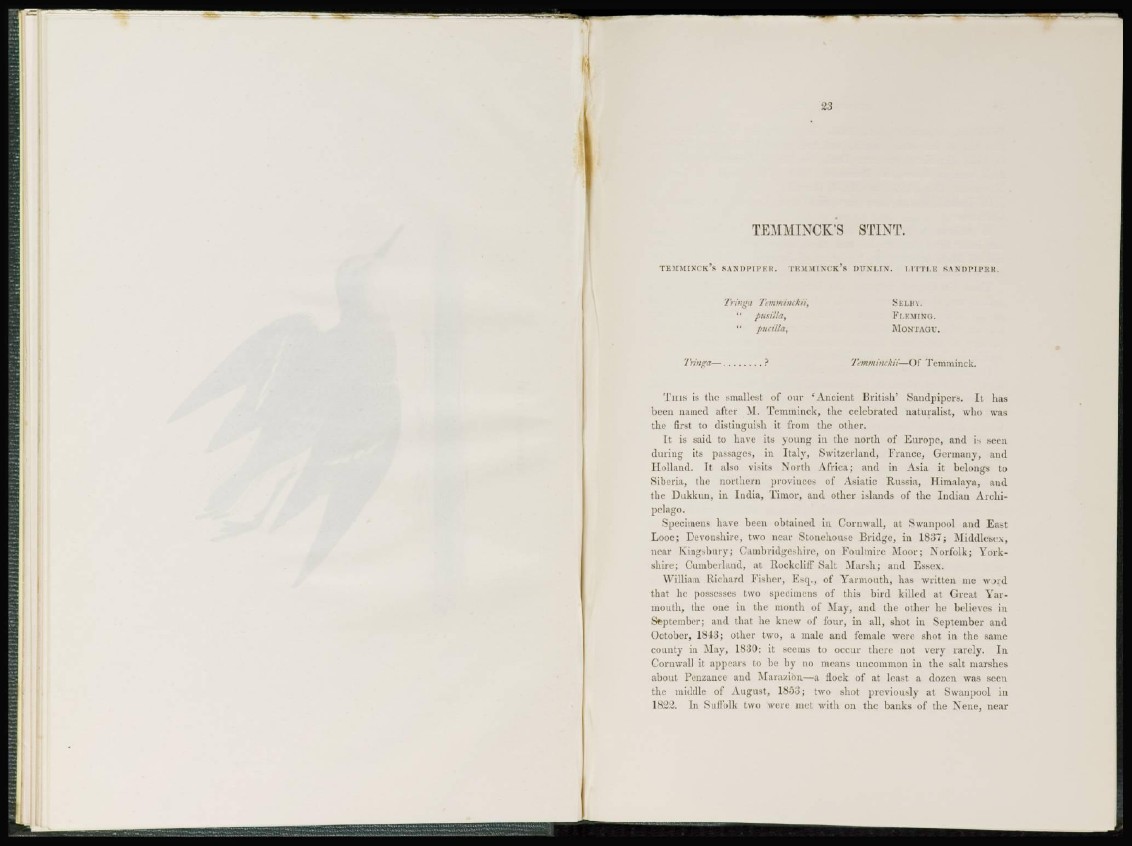
TEMMINOK'S STINT.
T E M M I N C K ' S S A N D P I P E R . TEMMINCK'S D U N L I N . LITTLE S A N D P I P E K.
'1 'ringa '1 \ m m intkii,
" pusilla,
" pucilla,
JsELEV.
FLEMING.
MONTAGU.
Tringa— Temmiitckii—Of Temminck.
T H I S is trie smallest of our 'Ancient British' Sandpipers. It has
heen named after M. Tcmmiuck, the celebrated naturalist, who was
the first to distinguish it from the other.
I t is said to have its young in the north of Europe, and is seen
during its passages, in Italy, Switzerland, France, Germany, and
Holland. It also visits North Africa; and in Asia it belongs to
Siberia, the northern provinces of Asiatic Russia, Himalaya, and
the Dukkun, in India, Timor, and other islands of the I n d i a n Archipelago.
Specimens have been obtained in Cornwall, al Swanpool and East
Looe; Devonshire, two near Stonehouso Bridge, in 1837; Middlesex,
near Kingsbury; Cambridgeshire, on P o u h n i r e Moor; Norfolk; Yorkshire;
Cumberland, at Bockcliff Salt Marsh; and Essex.
William Richard Fisher, Esq., of Yarmouth, has written me wjrd
that he possesses two specimens of this bird killed at Great Yarmouth,
the one in the month of May, and the other he believes in
September; and that he knew of four, in all, shot in September and
October, 1843; other two, a male and female were shot in the same
county in May, 1830: it seems to occur there not very rarely. In
Cornwall it appears to he by no means uncommon in the salt marshes
about Penzance and Mara/don—a flock of at least a dozen was seen
the middle of August, 1853; two shot previously at Swanpool in
1822. In Suffolk two were met with on the banks of the Nene, near